Could the Amur cork tree be a more widespread tree species in our forests?
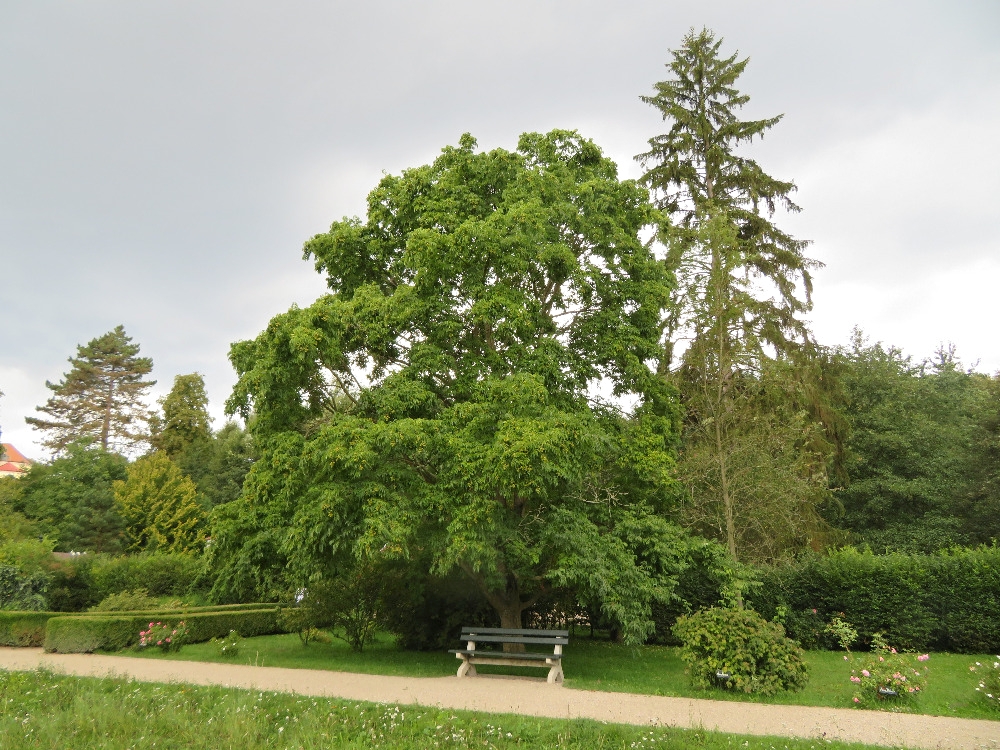 The use of non-native tree species has become a growing concern in European countries. Currently, more than 150 non-native tree species from non-European areas are widely used in the forestry of EU member states. Additionally, there are even more non-indigenous species that are commonly found in Europe’s ornamental parks, arboretums, and other areas.
The use of non-native tree species has become a growing concern in European countries. Currently, more than 150 non-native tree species from non-European areas are widely used in the forestry of EU member states. Additionally, there are even more non-indigenous species that are commonly found in Europe’s ornamental parks, arboretums, and other areas.
Photo: Amur cork tree near the castle in Častolovice. Author Jiří Čáp
The EU has created a list of non-native tree species in collaboration with its member states. This list is regularly updated and supplemented, with a particular focus on invasive non-native species. In accordance with the “EU Regulation Non-Native Tree Species,” which was passed in 2014, it is prohibited to import, trade, cultivate or otherwise propagate invasive non-native species.
For a considerable amount of time, researchers from VÚLHM, v. v. i., have been conducting studies on the utilization of different types of introduced tree species in the Czech Republic’s conditions. They are constantly monitoring and evaluating several provenance and research areas. Afterward, they share their findings, results, and recommendations with the professional public. Their aim is to provide comprehensive information on the advantages and disadvantages of using introduced tree species in forest management of the Czech Republic.
In one of the latest research assignments, scientists dealt with the Amur cork tree, when they evaluated the research trials of this tree species at the age of 70 years.
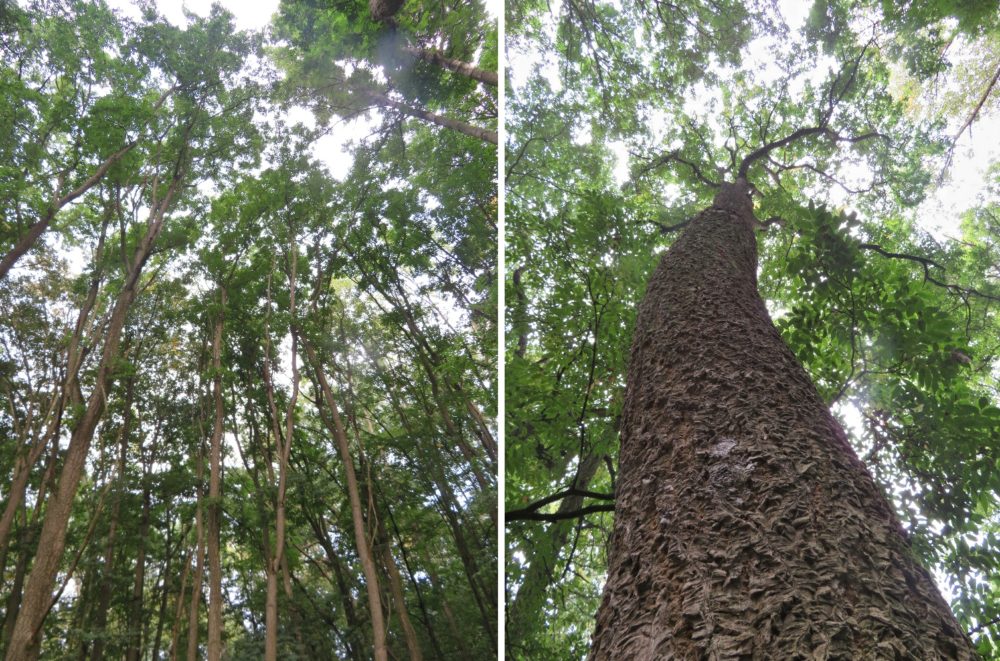 Photo: Amur cork tree in research trial Písty. Author Jiří Čáp
Photo: Amur cork tree in research trial Písty. Author Jiří Čáp
In 1954, seven research trials were established in what was then Czechoslovakia to test the silviculture methods of the Amur cork tree. The aim was to find an alternative to foreign imported raw material, specifically cork from cork oak, which could not be cultivated in Czechoslovakia.
Almost all research trials are currently located in areas subject to nature protection and the possible further expansion of this tree species in the given locations is no longer possible.
The scientists conducted an evaluation of growth parameters, stem form, and bark thickness. The best growth was observed in the Mochov and Písty localities, where trees reached heights of 28-30 meters and had enormous thicknesses of 47-50 centimetres. The bark thickness ranged from 1.7 to 2.4 centimetres. Except for the Mochov research trial, there were no regular silviculture interventions at other locations.
According to the research findings, the Amur cork tree can be used as a substitute for the dead ash tree due to its ability to resist pests and promote successful regrowth in ash stands. Although it is an exotic species, it can be used for carpentry operations. Additionally, the flowering trees can provide a source of food for bee colonies.
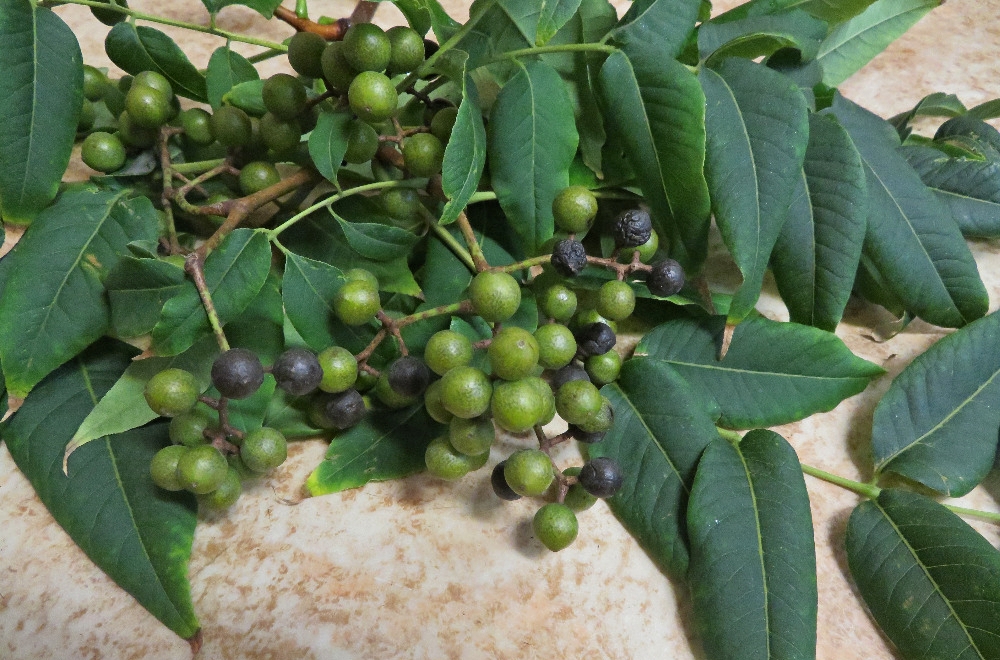 Photo: Amur cork tree, fruits. Author Jiří Čáp
Photo: Amur cork tree, fruits. Author Jiří Čáp
Another introduced tree species, which has been used for a long time, is the red oak.
The red oak is mainly found in the eastern and central regions of the United States, but it also extends into the south-central part of Canada all the way to the Atlantic Ocean coast. It was introduced to Europe in the 1700s and was initially used in castle gardens and parks. Gradually, it spread throughout Western and Central Europe and even colonized some areas of Belgium, Germany, and Poland. However, in some cases, it became an invasive species.
In European forests, red oak grows on the edges of forest stands with sufficient light availability and tannin, which are critical for the species’ survival and its longevity.
In the Czech Republic, the presence of red oak is recorded on 6,632 ha, which represents 0.25% of the forest area. The vegetation stock is 1,446,000 m3, i.e. 0.21% of the total wood stock. The average age of stands with red oak is 52 years.
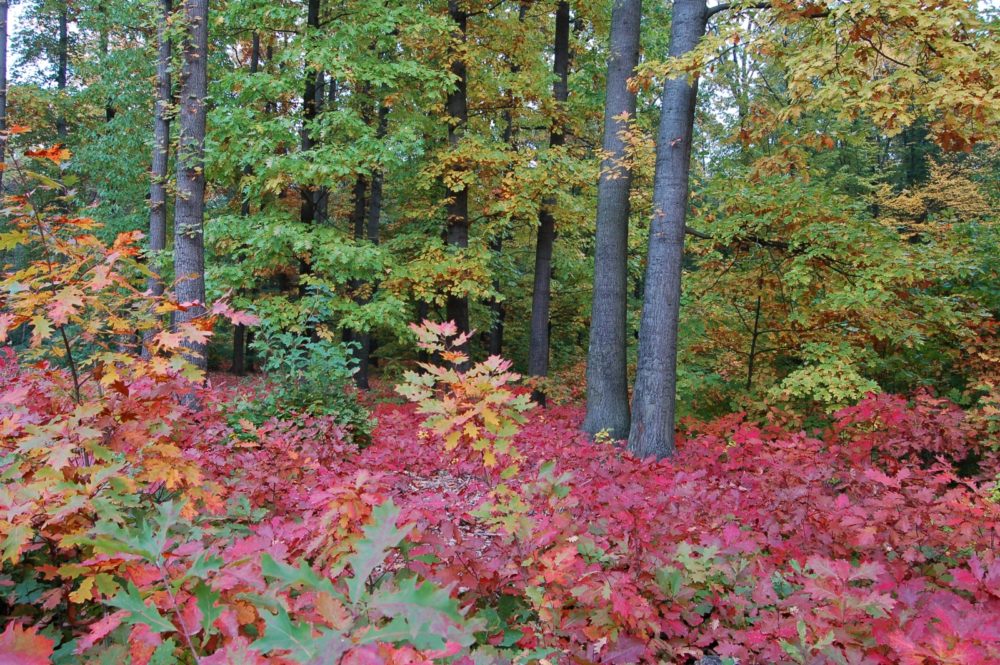 Photo: Red oak in the Hradec Králové forests. Author Jan Řezáč
Photo: Red oak in the Hradec Králové forests. Author Jan Řezáč
Red oak is most represented in forests in the capital city of Prague (3.12%) and in the Central Bohemian region (0.75%). In the Prague forests, it also has the highest average age (62 years), on the contrary, it has the youngest average age in the Moravian-Silesian region (46 years).
In the Czech Republic, there are currently 31 long-term research trials focused on red oak. These trials were established in 11 natural forest areas (PLO), with the majority located in PLO 10 “Středočeská pahorkatina” and PLO 17 “Polabí”. The youngest trials were, in time of their establishment, around 50 years old, while the oldest trial was 134 years old.
The researchers conducted their evaluation of red oak growth on 932 trees, the age range of 91-100 years was the most represented (9 trials). The average height of the stands ranges from 20.45 m to 31.40 m. The average enumerated DBH is in the range of 20.38–49.20 cm.
Scientists monitored natural regeneration, finding significant renewal on only two trials.
Regarding the evaluation of phenotype characteristics, the stem form can be difficult to determine. The size and shape of the crown is influenced by previous vegetation growth and the presence of other tree species. The roughness of the bark increases as the tree ages. Most trials are in excellent health and free of damage.
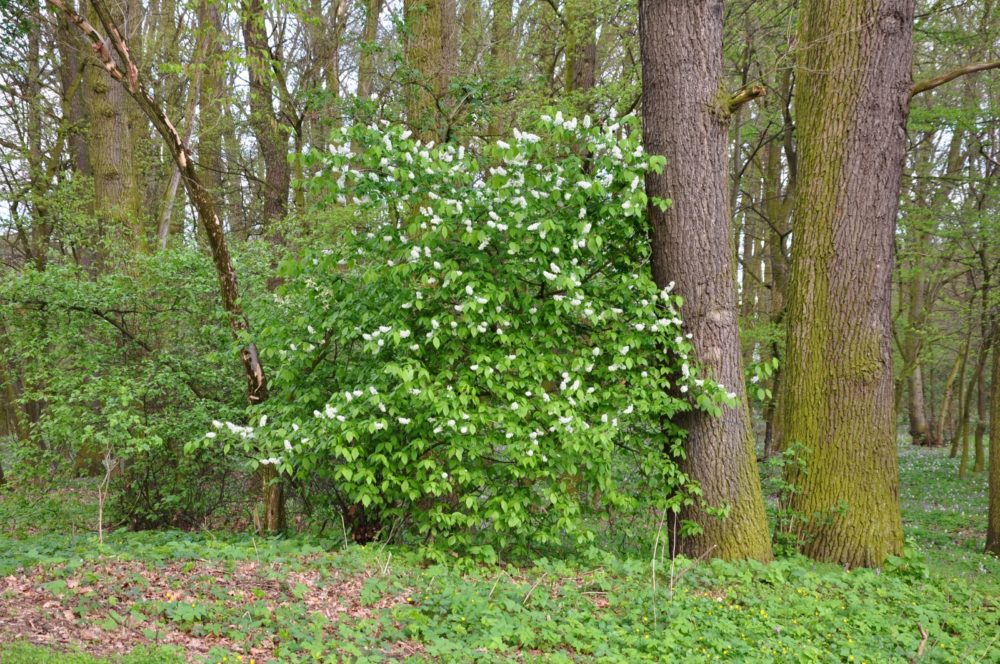 Photo: Black cherry in floodplain forest. Author Jan Řezáč
Photo: Black cherry in floodplain forest. Author Jan Řezáč
The scientists also assessed the usability of black cherry in our conditions.
The black cherry (Prunus serotina) is a deciduous tree native to North America, the growth of which exceeds our domestic bird cherry (Prunus padus).
In its locality of origin, black cherry is widely used for its high-quality ornamental wood in the furniture industry. The best quality wood raw material is obtained from the Alleghety Plateau region in the states of Pennsylvania, New York, and West Virginia.
In Europe, due to its invasive behaviour, black cherry is included in the list of invasive species as one of the main dangerous plants.
However, with controlled management, its wood quality, fruits, and non-production functions can be used. According to the scientists, its invasive spread could be prevented by maintaining a dense canopy as a prevention of natural regeneration.
“The news was processed according to the Proceedings of abstracts of the Information Seminar „Knowledge about the use of non-native tree species in the field of forestry” (Poznatky z oblasti lesnického využívání nepůvodních dřevin) being held on October 17th, 2023 at FGMRI (VÚLHM, v. v. i.) Strnady” (see here: https://www.vulhm.cz/seminar-poznatky-z-oblasti-lesnickeho-vyuzivani-nepuvodnich-drevin/)
Introduction photo: Amur cork tree, stem with clearly visible bark structure, research trial Písty. Author Jiří Čáp.
